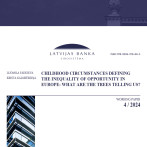Manufacturing growing fast in July
According to the CSB's information, the manufacturing output picked up 3.7% in July 2015 (month-on-month, seasonal effect excluded). Year-on-year, in turn, the pickup of 10.5% has been recorded.
July was the time when monthly growth indicators of subsectors, usually fluctuating and unstable, were mostly positive: the majority of subsectors increased their month-on-month production output in July. Food industry, recording an overall increase of 6.3% over one month and a notable upswing in meat processing and the fishing industry, and wood industry, posting a rise by 3.3% (primarily not on account of sawn materials but finished products; a new record in output level), contributed most to the total sector growth. However, significant growth was recorded in other subsectors as well, e.g. manufacture of chemicals (+25.7%), electrical equipment (+6.3%; a new output record), wearing apparel (+9.0%), textiles (+12.8%), and motor vehicles and trailers (+5.3%; a new output record). The energy sector also lived through a relatively good month (+0.5%). The only sectors recording decreases in production output were the manufacture of electronic products (-0.8%) and repair of machinery and equipment (-1.1%).
The trends observed of late in the manufacture of wearing apparel and textiles give rise to some concerns. Over recent years, the production volumes in both have been contracting (despite some growth in July 2015 which is still to be taken as an exception); the annual rate of change for the first seven months of the year is negative, reaching even a double digit number. The structural statistics data for industry suggest that these sectors' value added (manufacture of wearing apparel in particular) is dominated by the labour costs component, while companies have a relatively small value added share at their disposal for investment financing and profit making. This goes hand in hand with public statements made by companies regarding employees who are difficult to find, and wages that cannot be raised to remain competitive on the international scale. With the economy advancing, however, it is normal that some subsectors of manufacturing, which today are unable to increase their productivity levels substantially, are likely to incur problems over time. Some 88% of the output of Latvian textile industry and 86% of wearing apparel are exported. Taking into account the fact that these industries (wearing apparel industry in particular) are labour-intensive, sector-specific problems are likely to aggravate and lead to consolidation in the near future. The survivors most likely will be large and productive companies, while medium- and small-sized enterprises will have to look for higher specialisation niches for their output.
During the previous month, the central global focus was on developments in China. The news about China's decelerated economic growth (and the related monetary decisions of the People's Bank of China) caused heightened volatility in global financial markets. So far, these fluctuations have looked like a modest portfolio restructuring, with possibly insignificant effect on the real economy. The events of the recent weeks, however, have shown that the global financial market is quite sensitive to the negative news coming from China. That China is going to face economic adjustments and some redirection towards private-consumption-driven economic growth was known for quite a time; nevertheless, the financial markets are trying to grasp it only right now. How can China's growth deceleration affect Latvia's real economy and manufacturing? The answer is – in a direct way insignificantly, yet China's influence on global processes is not to be neglected. With the weakening trend in China's growth persisting, the demand for oil products will fall, thus exerting an additional downward pressure on oil prices; Latvia as an oil-importing country will benefit from it. On the other hand, however, a slower growth in China will reduce its demand for imports from other countries and negatively affect the pace of the global economy, adversely affecting Latvia as well. Moreover, it may be anticipated that with China's economy contracting its monetary policy pursuit will become more aggressive, which, in part, may jeopardise the plans of Latvian businesses to conquer this market.
As to overall perspective for the year, Latvia's positive manufacturing dynamics allow us to be optimistically biased at the current juncture. In 2015, the volume of manufacturing production output is expected to expand by around 5-6%.
Textual error
«… …»






